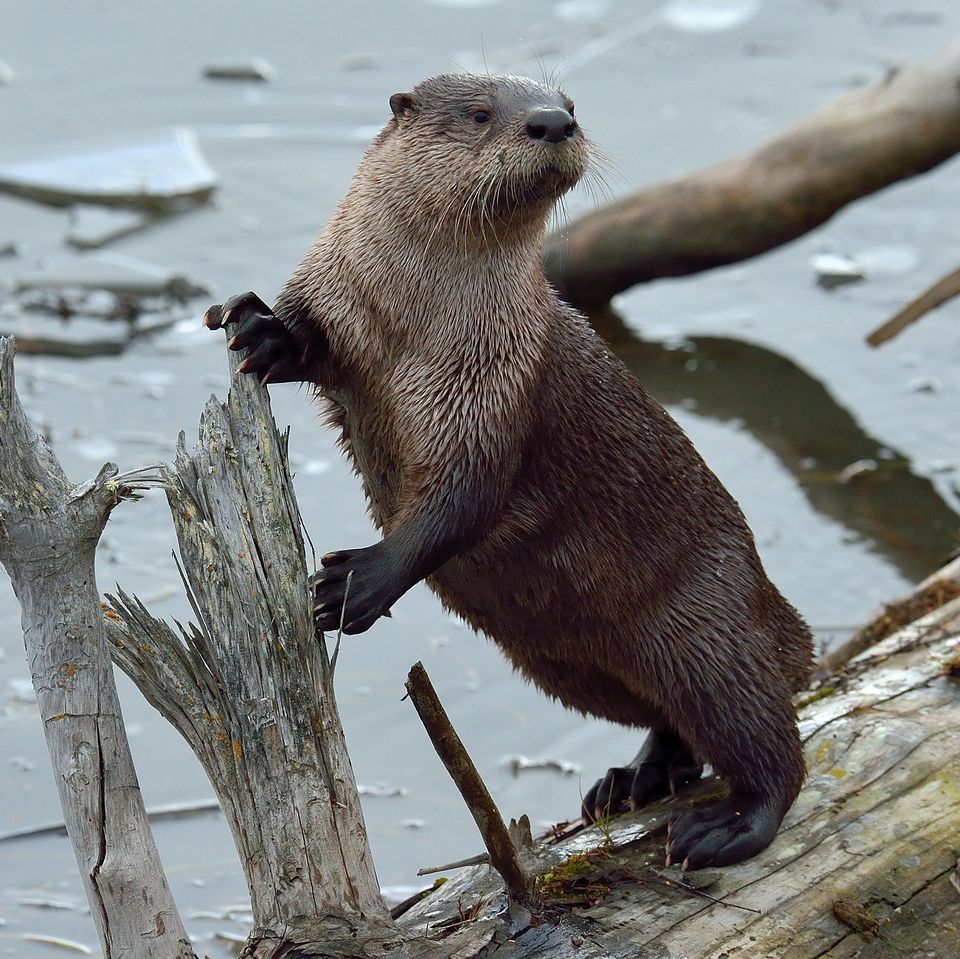North American River Otter
Feral to North America, the 7 subspecies of the North American river otter is found along the waterways and coasts, and is also known as the Northern river otter or the Common otter.
Scientific Name – Lontra canadensis
Classification – Lontra
Gender Names – Male – male; Female – female; Baby – whelp, pup
Collective Noun – Family, raft, romp
Length/Size – 66 to 107 centimetres (26 to 42 in)
Weight – 5 to 14 kilograms (11 to 31 lb)
Top Speed – Swimming speed: 7 miles per hour; running speed: 18 miles per hour (max)
Life Expectancy – 8-9 years; up to 21 in captivity
Gestation Period – 61–63 days
Special Features – Protected and insulated by a thick, water-repellent coat of fur
Social Structure – Basic social group is their own family comprising of an adult female and her offspring. Adult males also establish groups enduring social groupings with as many as 17 individuals
Geographical Distribution – Varies between subspecies
Natural Habitat – Both freshwater and coastal marine, including inland wetlands, coastal shorelines, marshes, lakes, rivers, and estuaries
Conservation Status – Least Concern
Diet – Amphibians, fish, turtles, crayfish, crabs, and other invertebrates; occasionally birds, bird eggs, and small terrestrial mammals
Predators – Bobcats, coyotes, birds of prey, alligators etc.

